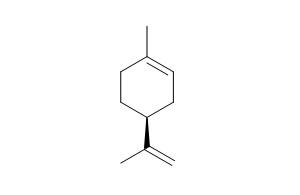(S)-(-)-Limonene
Inquire / Order:
manager@chemfaces.com
Technical Inquiries:
service@chemfaces.com
Tel:
+86-27-84237783
Fax:
+86-27-84254680
Address:
1 Building, No. 83, CheCheng Rd., Wuhan Economic and Technological Development Zone, Wuhan, Hubei 430056, PRC
Providing storage is as stated on the product vial and the vial is kept tightly sealed, the product can be stored for up to
24 months(2-8C).
Wherever possible, you should prepare and use solutions on the same day. However, if you need to make up stock solutions in advance, we recommend that you store the solution as aliquots in tightly sealed vials at -20C. Generally, these will be useable for up to two weeks. Before use, and prior to opening the vial we recommend that you allow your product to equilibrate to room temperature for at least 1 hour.
Need more advice on solubility, usage and handling? Please email to: service@chemfaces.com
The packaging of the product may have turned upside down during transportation, resulting in the natural compounds adhering to the neck or cap of the vial. take the vial out of its packaging and gently shake to let the compounds fall to the bottom of the vial. for liquid products, centrifuge at 200-500 RPM to gather the liquid at the bottom of the vial. try to avoid loss or contamination during handling.
J Ethnopharmacol.2022, 282:114574.
Appl. Sci. 2021, 11(23),11099.
Phytomedicine.2018, 38:12-23
Molecules.2019, 24(21):E3834
Plant Direct.2021, 5(12):e372.
Sichuan Agricultural University2023, 4630743.
Horticulturae2024, 10(4), 382.
Food Chem X.2024, 24:101909.
ACS Pharmacol. Transl. Sci.2023, 3c00129.
Sci Rep.2021, 11(1):21038.
Related and Featured Products
Phytochemistry, 2001, 57(2):199-208.
Biotransformation of (R)-(+)- and (S)-(−)-limonene by fungi and the use of solid phase microextraction for screening.[Reference:
WebLink]
The biotransformation of (R)-(+)- and (S)-(−)-limonene by fungi was investigated.
METHODS AND RESULTS:
More than 60 fungal cultures were screened for their ability to bioconvert the substrate, using solid phase microextraction as the monitoring technique. After screening, the best fungal strains were selected for further study and were grown as sporulated surface cultures in conical flasks and as submerged liquid cultures. It was found that (+)- and (−)-limonene were converted by Penicillium digitatum to α-terpineol (main metabolite), cis- and trans-p-menth-2-en-1-ol, neodihydrocarveol and limonene oxide (minor metabolites) using liquid cultures. The bioconversion of (R)-(+)- and (S)-(−)-limonene by Corynespora cassiicola yielded (1S,2S,4R)- and (1R,2R,4S)-limonene-1,2-diol respectively. The bioconversions by liquid cultures were also monitored by solid phase microextraction as a function of time. The optimum conversion of limonene to α-terpineol by Penicillium digitatum was obtained after 8 hours (yield up to 100%).
CONCLUSIONS:
Since an important pH-decrease was noticed in some liquid broths, the stability of limonene under acidic conditions was investigated. No acid catalysed conversion products were recovered after 8 days from control flasks at pH 3.5 containing limonene.



